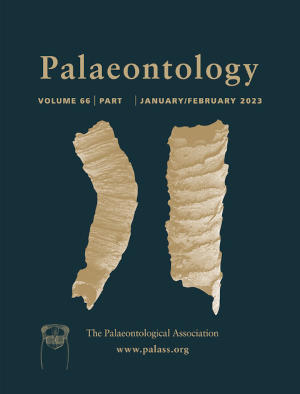Article: Bridging the extant and fossil record of planktonic foraminifera: implications for the Globigerina lineage
Publication: Palaeontology
Volume:
66
Part:
6
Publication Date:
2023
Article number:
e12676
Author(s):
Alessio Fabbrini, Mattia Greco, Francesco Iacoviello, Michal Kucera, Thomas H.G. Ezard, and Bridget S. Wade
Abstract
Abstract We conducted a morphometric study and wall texture analysis on extant and fossil specimens of the planktonic foraminifera Globigerina falconensis plexus. Our global data reveal morphological inconsistencies between fossil and extant populations. Our results are significant as G. falconensis is widely used in palaeoceanographic studies in conjunction with its sister taxon G. bulloides. Morphologically these two species are similar, with the main difference being the distinctive apertural lip present in G. falconensis. We selected cores covering the entire stratigraphic range of G. falconensis, from the early Miocene to current day, spanning sites from high latitudes in the North Atlantic Ocean and the southern Indian Ocean to sites in equatorial regions. The morphology found in the modern ocean is not consistent with the Miocene holotype of Globigerina falconensis Blow described from lower Miocene sediments in Venezuela. A more lobate morphology evolved in the late Miocene, thus, a new name is required for this morphotype, coexisting in the modern oceans with G. falconensis s.s. We thus describe the new morphospecies, G. neofalconensis for the more lobate forms which evolved in the late Miocene and inhabit the modern oceans. Additionally, we report a pseudocancellate wall texture present in the G. falconensis plexus. We use the molecular sequences from the PR2 database to explore the generic attribution of the G. falconensis lineage, confirming its close relationship with G. bulloides and its retention in the genus Globigerina.
